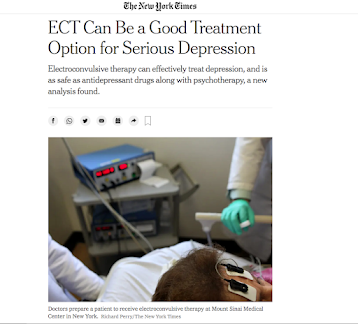Criticisms of ECT Laid Bare: Dr. Gergel's Commentary in BJP

In the British Journal of Psychiatry is this commentary: The pdf is here . And an excerpt from from the text: The first question must surely be motivation. Around 1.4 million people worldwide receive ECT annually.1 In psychiatric terms, ECT is relatively costly and complex, involving general anaesthesia in most countries, with estimates of annual treatment costs that ‘can exceed $10 000’. 14 If, after 80 years of ECT, there really was no evidence for effectiveness, why would healthcare providers continue funding ECT and what would psychiatrists stand to gain, especially in the face of such acrimonious criticism? Moreover, claiming that psychiatry knowingly inflicts an invasive medical treatment with potentially serious side-effects and no evidence of substantive therapeutic benefits implies a global breach of core medical ethical principles. Not only would this violate both beneficence and nonmaleficence, but also justice, through allocating limited resources to expensive and ineffect















